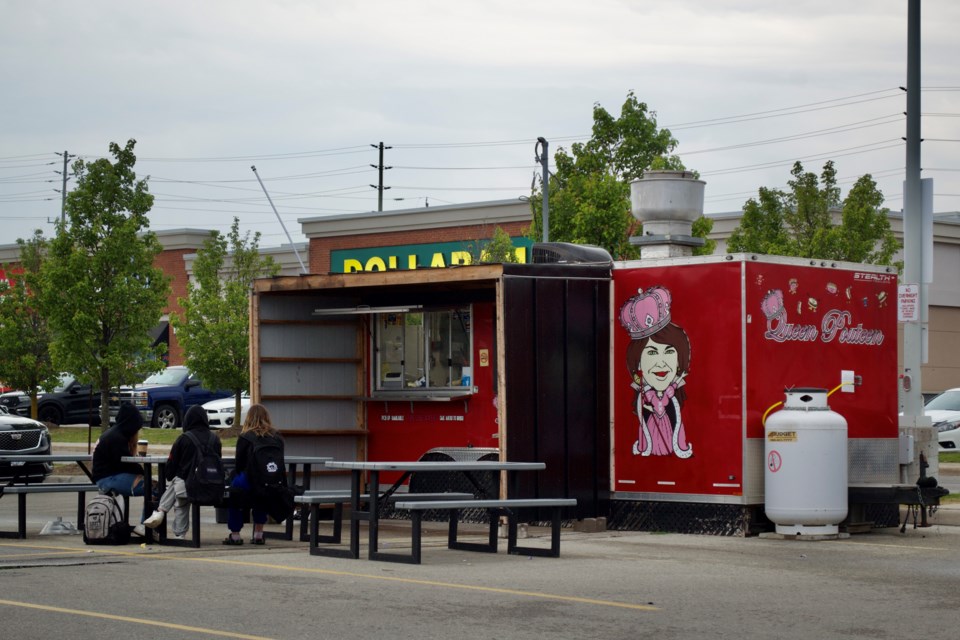More food trucks are on the menu in Innisfil, but the kitchen doesn’t open until after the next council meeting.
Changes to the town’s licensing bylaw were on the agenda at council’s Oct. 23 meeting that would increase the maximum number of refreshment trailer vendors allowed to operate in the municipality at any given time from 10 to 25.
Councillors seemed to have little trouble with the increase. Though potential locations gave the politicians pause.
The bylaw, as proposed, called for a 30-metre buffer from the nearest exterior wall of a restaurant on an immediately abutting property without obtaining the express permission of the property owner.
That could cause some issues, said Coun. Fred Drodge, particularly in Lefroy.
“I’m just trying to visualize that: If there was a property that was only 50-feet wide abutting the commercial restaurant, it would not exceed that 50 feet, it wouldn’t go the full 30 metres?” Drodge said.
“Most of the main drag of Lefroy is now changed over to commercial properties, but they are really residential properties that are only 50-feet wide,” he continued. “I guess that’s where I’m struggling with this … You could potentially have a refreshment trailer 50 feet away from a restaurant.”
Not only would non-abutting properties within the otherwise 30-metre buffer be excluded from consideration in the licensing of a food truck, but properties across the road would also be shut out. The immediately abutting property, in those cases, would be the roadway, with the county or the town as the owner in question.
That was less a concern for Drodge, and for Deputy Mayor Kenneth Fowler, following additional clarification from planning manager Brandon Correia. Drodge felt adhering to the full 30-metre buffer from the property line, regardless of immediate abutment, would be a way to move forward and ensure brick and mortar businesses do not face hardship because of the bylaw changes.
Correia said the bylaw changes were about transparency, to ensure the restaurants in the immediate area had a “level of notice” and “sign-off” when a refreshment vehicle is looking to operate within the proposed parameters.
“The main reason (the 30-metre buffer) is in the bylaw is basically so that in close proximity there is some level of knowledge between existing owner and that new business vendor,” Correia said. “Perhaps the bylaw could be re-worded to be a bit more broad, but the idea was if it’s ‘immediately abutting,’ it would capture most concerns.”
As Mayor Lynn Dollin questioned exactly what problem her colleagues were trying to solve, chief administrative officer (CAO) Oliver Jerschow indicated a broader wording could lead to more bureaucracy.
“If we look at the wording of the bylaw, what we’re talking about is how often do we want to require the approval of the restaurant owner,” he said.
That approval is the trigger, the CAO continued, as the bylaw as proposed doesn’t prohibit, but rather requires permission.
“All we’re really talking about is under what circumstances are we going to require that buy-in from the abutting property owner,” Jerschow said. “If council would prefer that question be asked more often, you could just say 30-metre radius and be done with it.”
With last week’s warm spell in the rearview mirror, the licensing of food trucks was determined not to be as timely an issue as it might have been in the spring. The matter was referred to staff and will come back for further council consideration at the regular meeting Nov. 13.



